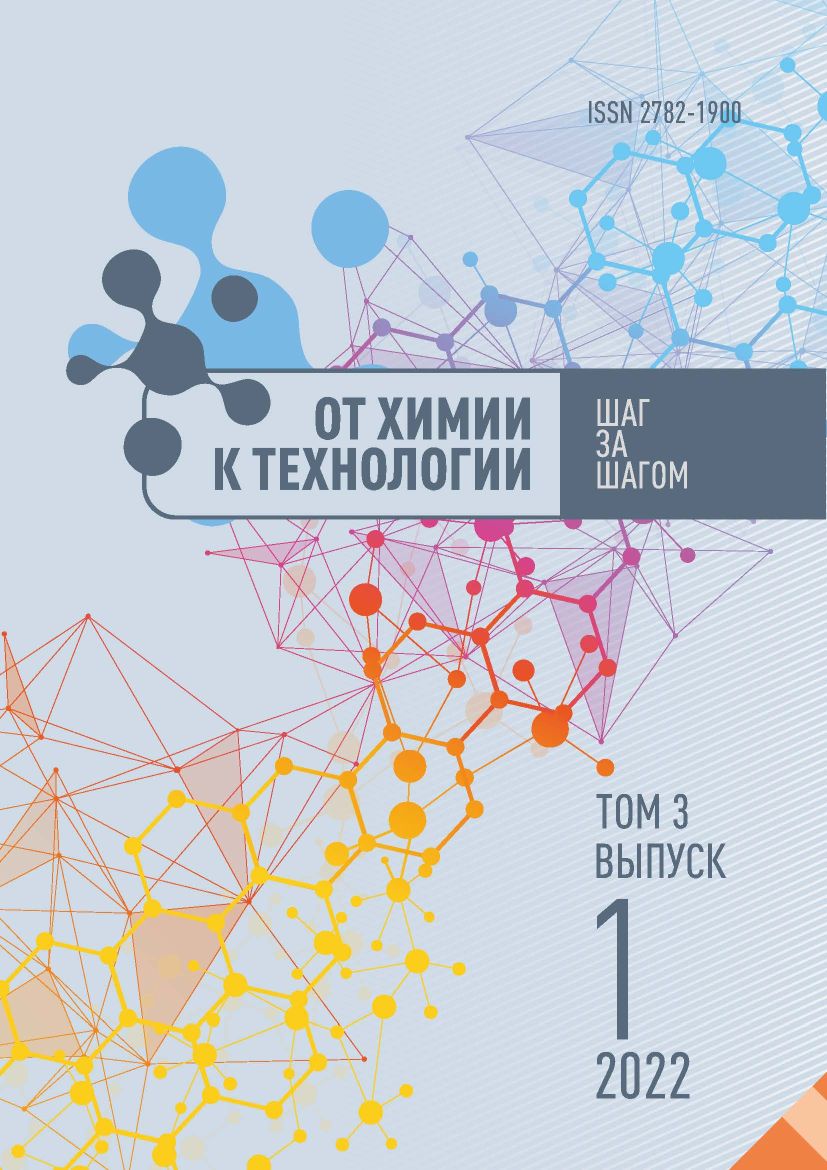Ivanovo, Ivanovo, Russian Federation
Ivanovo, Ivanovo, Russian Federation
The paper concerns the sorption of heavy metal ions from aqueous solutions by cellulose sorbents agents. We modified the wood cellulose by polyvinylpyrrolidone and carboxylic acids. Also we studied the equilibrium and kinetics of Cu(II), Co(II) and Ni(II) ions sorption from aqueous solutions by native and modified cellulose samples. We treated the sorption isotherms under study according to Langmuir models and theory for volume filling of micropores. The Langmuir model is the most correct one for description of the process of heavy metal ions sorption by cellulose sorbents agents. According to the study, the maximum sorption capacity of the modified sorbents is 1.5-2 times higher than the maximum sorption capacity of the native cellulose. The samples obtained can be arranged in the following order of increasing ultimate sorption capacity (A∞): native cellulose < polyvinylpyrrolidone-modified pulp < citric acid-modified pulp. In addition, we studied the influence of media acidity on the sorption of heavy metal ions in pH 1-7. We observed a significant increase in the pH of the initial solution from 1 to 6; there is a rapid increase of the degree of extraction of Cu(II), Cu(II) and Ni(II) ions. Experimentally we obtained the IR spectra of native wood cellulose and its samples modified by polyvinylpyrrolidone and citric acid. Also the authors made an elemental analysis of all types of modified sorbents.
cellulose, modification, heavy metal ions, isotherms, sorption kinetics
1. Zhou Q., Yang N., Li Y., Ren B., Ding X., Bian H., Yao X. Total concentrations and sources of heavy metal pollution in global river and lake water bodies from 1972 to 2017 // Glob. Ecol. Conserv. 2020. Vol. 22. P. e00925. DOI:https://doi.org/10.1016/j.gecco.2020.e00925.
2. Naushad Mu., Lichtfouse E. (Eds.). Green Materials for Wastewater Treatment. Springer International Publishing, 2020. 366 p.
3. Huang Y., Chen Q., Deng M., Japenga J., Li T., Yang X., He Z. Heavy metal pollution and health risk assessment of agricultural soils in a typical peri-urban area in southeast China // Journal of Environmental Management. 2017. No. 207. R. 159–168. DOI:https://doi.org/10.1016/j.gexplo.2019.106403.
4. Beni A.A., Esmaeili A. Biosorption, an efficient method for removing heavy metals from industrial effluents // Environmental Technology & Innovation. 2019. No. 17. R. 100503. DOI:https://doi.org/10.1016/j.eti.2019.100503.
5. Sankaran R., Show P.L., Ooi C.W., Ling T.C., Shu-Jen C., Che S.Y., Chang Y.K. Feasibility assessment of removal of heavy metals and soluble microbial products from aqueous solutions using eggshell wastes // Clean Technol. Environ. Policy. 2020. V. 22. R. 773-786. DOI:https://doi.org/10.1007/s10098-019-01792-z.
6. Khan T.A., Chaudhry S.A., Ali I. Equilibrium uptake, isotherm and kinetic studies of Cd(II) adsorption onto iron oxide activated red mud from aqueous solution // Journal of Molecular Liquids. 2015. No. 202. R. 165 175. DOI:https://doi.org/10.1016/j.molliq.2014.12.021.
7. Crini G., Lichtfouse E. Advantages and disadvantages of techniques used for wastewater treatment // Environmental Chemistry Letters. 2019. V. 17. R. 145-155. DOI:https://doi.org/10.1007/s10311-018-0785-9ï.
8. Katheresan V., Kansedo J., Lau S.Y. Efficiency of various recent wastewater dye removal methods: A. Review // Journal of Environmental Chemical Engineering. 2018. Vol. 6, no. 4. R. 4676–4697. DOI:https://doi.org/10.1016/j.jece.2018.06.060.
9. Shamsollahi Z., Partovinia A. Recent advances on pollutants removal by rice husk as a bio-based adsorbent: a critical review // Journal of Environmental Management. 2019. No. 246. R. 314–323. DOI:https://doi.org/10.1016/j.jenvman.2019.05.145.
10. Yadav S., Yadav A., Bagotia N., Sharma A.K., Kumar S. Adsorptive potential of modified plant-based adsorbents for sequestration of dyes and heavy metals from wastewater // Journal of Water Process Engineering. 2021. No. 42. R. 102148. DOI:https://doi.org/10.1016/j.jwpe.2021.102148.
11. Ezeonuegbu B.A., Machido D.A., Whong C.M.Z., Japhet W.S., Alexiou A., Elazab S.T., Qusty N., Yaro C.A., Batiha G.El-S. Agricultural waste of sugarcane bagasse as efficient adsorbent for lead and nickel removal from untreated wastewater: Biosorption, equilibrium isotherms, kinetics and desorption studies // Biotechnology Reports. 2021. Vol. 30. R. e00614. DOI:https://doi.org/10.1016/j.btre.2021.e00614.
12. Nikiforova T.E., Kozlov V.A. Zakonomernosti vliyaniya prirody polisaharidnyh materialov na raspredelenie ionov tyazhelyh metallov v geterofaznoy sisteme biosorbent - vodnyy rastvor // Fizikohimiya poverhnosti i zaschita materialov. 2016. T. 52, № 3. S. 243-271. DOI:https://doi.org/10.7868/S0044185616030219.
13. Nikiforova T.E., Kozlov V.A., Odincova O.I. Zakonomernosti raspredeleniya ionov medi (II) i nikelya (II) v geterofaznoy sisteme vodnyy rastvor – modificirovannoe l'nyanoe volokno // Rossiyskiy himicheskiy zhurnal. 2015. T. 59, № 4. S. 76–84. DOI:https://doi.org/10.6060/rcj.
14. Losev N.V., Nikiforova T.E., Makarova L.I., Lipatova I.M. Vliyanie mehanicheskoy aktivacii na strukturu i sorbcionnuyu sposobnost' hitina // Fizikohimiya poverhnosti i zaschita materialov. 2017. T. 53, № 5. S. 480–485. DOI: 10.1134
15. Meretin R.N., Nikiforova T.E. Issledovanie reakcionnoy sposobnosti poverhnosti uglerodsoderzhaschego silikatnogo sorbenta rastitel'nogo proishozhdeniya // Izv. vuzov. Himiya i him. tehnologiya. 2021. T. 64, № 11. S. 117-125. DOI:https://doi.org/10.6060/ivkkt.
16. Kokotov Yu.A., Pasechnik V.A. Ravnovesie i kinetika ionnogo obmena. L.: Himiya, 1970. 336 s.
17. Ahnazarova S.L., Kafarov V.V. Metody optimizacii eksperimenta v himicheskoy tehnologii. M.: Vysshaya shkola, 1985. 327 s.
18. Petrov I.N. Organicheskaya himiya. M.: Nauka, 1996. 650 s.
19. Nikitin N.I. Himiya drevesiny i cellyulozy. M.-L.: Izd-vo AN SSSR, 1962. 712 s.







